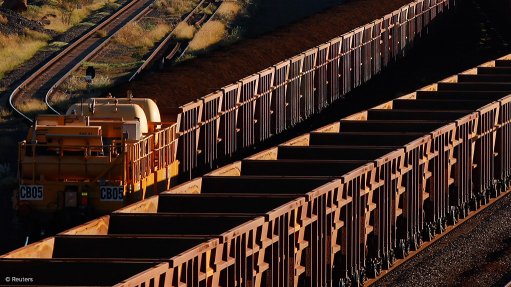Kinder Morgan: by shareholders, for shareholders
This article has been supplied as a media statement and is not written by Creamer Media. It may be available only for a limited time on this website.
Abdul Davids – Head of Research, Kagiso Asset Management
In the late 1990s, the emergence of commercial hydraulic fracturing and horizontal drilling for shale (collectively known as fracking) transformed the US energy landscape. These technologies enabled access to previously unreachable, abundant North American oil and gas reserves. After decades of heavy dependence on imported energy, the US is now the largest global natural gas producer, and by 2020, could overtake Saudi Arabia as the world’s largest supplier of hydrocarbons. A key beneficiary of these developments has been Kinder Morgan, now North America’s largest energy infrastructure company.
Founded in 1997 by college friends Richard Kinder and William Morgan when they acquired Enron Liquids Pipeline for US$40 million, Kinder Morgan (not to be confused with the chocolate company), now has a market capitalisation of close to US$50 billion has invested in an unparalleled network of pipelines, terminals and processing facilities across the US and Canada. This network uniquely positions the company to take advantage of the growing need for energy infrastructure required to support expanding domestic production.
Exploiting the oil and gas opportunity
For most of the 20th Century, the US economy relied heavily on imported energy and infrastructure was structured to support this. Imported supplies were transported in one direction: from the US Gulf Coast refineries and ports to the mid-continent region. Following the ‘fracking revolution’, new infrastructure was required to connect the new shale wells - being discovered across the country - to the existing refinery centres, and then either to ports for export, or back through a complex network of pipelines for domestic use across the breadth of the US.
Seeing opportunity, Kinder Morgan invested heavily to meet this demand by buying up numerous smaller pipeline businesses and building new lines to connect new shale wells to existing networks. Today, the company’s vast network of pipelines, terminals and processing facilities now spans approximately 84 000 miles (shown in the visual below), with 180 terminals which store and redirect flow.
Natural gas is increasingly the primary energy source powering the US economy, overtaking coal in 2015 as the most consumed fuel (highlighted in the graph below) and demand for US natural gas is projected to increase by a further 35% over the next 10 years. Kinder Morgan has the largest natural gas network in the US with 69 000 miles of pipeline which are connected to every important US natural gas or shale resource. Thirty-eight percent of the natural gas consumed in North America moves through the company’s pipelines.
The company is also the largest independent transporter of petroleum products, moving 2.1 million barrels of product per day. The company transports gasoline, jet fuel, diesel, crude, natural gas liquids and more from the Gulf Coast refineries to wholesale distribution centres throughout the country. In addition, it is the largest transporter of carbon dioxide (CO2), transporting 1.2 billion cubic feet per day. Most of the CO2 is used in enhanced oil recovery (EOR) projects in the Permian Basin of West Texas. As the largest independent terminal operator in the US, Kinder Morgan’s liquids terminals store refined petroleum products, chemicals, ethanol and more, and have a capacity of 152 million barrels. The company’s dry bulk terminals store and handle approximately 65 million tonnes of petroleum coke (a valuable by-product of the oil refining process), steel and coal and other materials a year.
In Canada, Kinder Morgan Canada’s oil sands pipeline transports approximately 300 000 barrels per day from Alberta to Vancouver, British Columbia and Washington State. The upcoming expansion of the Trans Mountain pipeline will span 1150 kilometres and will increase that capacity to approximately 890 000 barrels per day. The Government of Canada approved the US$6.9 billion expansion project in November 2016 and construction is due to begin in 2017 to be completed by late 2019.
Attractive, low-risk business model
Kinder Morgan’s revenue model operates like a toll bridge. A flat fee is charged for usage, regardless of the volume of product transported. This provides a stable and growing cashflow and revenue stream that is essentially unaffected by the volatility in energy and oil prices. The company manages also business risk by ensuring that capacity on new pipelines is pre-sold to energy companies via an auction process before construction commences. Once completed, pipelines remain in use for decades with very little maintenance required, resulting in strong cashflows with low capital requirements.
The management team and founding shareholders collectively own 29% of Kinder Morgan and describe the company as “run by shareholders, for shareholders”. Now the executive chairman, Richard Kinder earns a token salary of US$1 a year, as does CEO Steven Kean. Neither receives a bonus, and only Kean receives share options and restricted share awards. This means their income is entirely reliant on dividends, aligning their own interests directly on par with those of minority shareholders. The company aims to provide a stable yet growing dividend profile that is underpinned by the solid cash generation of the business.
Taking advantage of the dips
Throughout the mid-2000s oil price boom, Kinder Morgan invested in its own infrastructure for growth. In mid-2008, oversupply in the market caused oil prices to drop from a peak of US$143 in mid-2008 to below US$30 a barrel in early 2009. Kinder, then CEO, recognised that this downturn was the result of a fundamental change in the dynamics of the oil market, caused by the emergence of shale and rise of the US a major energy producer. He used the opportunity to aggressively acquire assets to grow Kinder Morgan’s market share, using debt raised against the company’s strong balance sheet. Following the more recent 2014 oil price collapse there has again been a noticeable increase in acquisitions, as the company exploits depressed pipeline company valuations and the low interest rate environment in the US.
In the low oil price environment of 2015, Kinder Morgan’s own share price declined along with others in the energy market, despite its stable revenue model. As a result, the company reduced its 2015 dividend payout in order to channel cashflow into reducing debt levels, to avoid the risk of a downgrade to its credit rating. Many investors - who had selected the share for its protection from commodity price volatility - were disappointed with the reduced dividend. The share price fell sharply, reaching US$12 a share in January 2016, from an April 2015 peak of US$44. However, the company’s cashflow generation remained unaffected by the energy price rout and the share price has recovered strongly in 2016, reaching a current price of US$22 a share. The dividend payout has been increased again.
Future prospects
The share price decline in 2015 reflected widespread investor disappointment following the reduction in the dividend. However the strong 2016 recovery in the share price is reflective of the continued underlying growth in the earnings and cashflow of the Kinder Morgan business. As North American energy production continues to grow and export volumes increase, Kinder Morgan’s unmatched infrastructure network positions the company for significant growth.
Comments
Press Office
Announcements
What's On
Subscribe to improve your user experience...
Option 1 (equivalent of R125 a month):
Receive a weekly copy of Creamer Media's Engineering News & Mining Weekly magazine
(print copy for those in South Africa and e-magazine for those outside of South Africa)
Receive daily email newsletters
Access to full search results
Access archive of magazine back copies
Access to Projects in Progress
Access to ONE Research Report of your choice in PDF format
Option 2 (equivalent of R375 a month):
All benefits from Option 1
PLUS
Access to Creamer Media's Research Channel Africa for ALL Research Reports, in PDF format, on various industrial and mining sectors
including Electricity; Water; Energy Transition; Hydrogen; Roads, Rail and Ports; Coal; Gold; Platinum; Battery Metals; etc.
Already a subscriber?
Forgotten your password?
Receive weekly copy of Creamer Media's Engineering News & Mining Weekly magazine (print copy for those in South Africa and e-magazine for those outside of South Africa)
➕
Recieve daily email newsletters
➕
Access to full search results
➕
Access archive of magazine back copies
➕
Access to Projects in Progress
➕
Access to ONE Research Report of your choice in PDF format
RESEARCH CHANNEL AFRICA
R4500 (equivalent of R375 a month)
SUBSCRIBEAll benefits from Option 1
➕
Access to Creamer Media's Research Channel Africa for ALL Research Reports on various industrial and mining sectors, in PDF format, including on:
Electricity
➕
Water
➕
Energy Transition
➕
Hydrogen
➕
Roads, Rail and Ports
➕
Coal
➕
Gold
➕
Platinum
➕
Battery Metals
➕
etc.
Receive all benefits from Option 1 or Option 2 delivered to numerous people at your company
➕
Multiple User names and Passwords for simultaneous log-ins
➕
Intranet integration access to all in your organisation


















